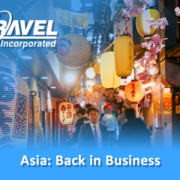The New Virtual and Hybrid Workspace Environments
(January 2022)
Companies are continuing to reevaluate the benefits, opportunities, and challenges of hybrid work environments. This corporate consideration involves technology infrastructure, security protocols, and cost containment, but must also include the impact on the company culture and what the associates are expecting from their homes as they manage their ongoing challenges of work-life balance. At the recent Global Business Travel Association conference, a team of executives came together to discuss how they started, and continue to adjust to the new hybrid workplace.
The Virtual Workforce
For many companies, a necessary response to the Covid-19 pandemic was to shift their previous in-office workspace to allow for a virtual work environment. Companies that didn’t provide this option in the past were now making new investments in mobile system integration and security protocols that would allow each employee to operate at home as though they were in the office. As a result, many companies reduced overhead by closing regional locations and reallocating funds to further support an ongoing virtual workforce.
Maintaining Corporate Culture
It has been said that what attracts employees and creates loyalty is based fundamentally on the embedded corporate culture. Employees appreciate the comradery of their team members, ability to celebrate birthdays or other life events, and build meaningful friendships with colleagues. By shifting to a remote or hybrid work environment, maintaining this type of culture poses new challenges while the workforce adapts to the changes of their new day-to-day routines. It is important to identify the fundamentals and key drivers of the unique attributes of the culture and determine how to reinforce this across borders. Success largely relies on individual team dynamics, adding elements of entertainment to the weekly team meetings and fostering that which originally drove the associates to your company in the first place. Although maintaining a culture in a hybrid environment takes effort and constant communication, it is possible to achieve through integral trust and mutual respect of each individual.
The ‘Great Reflection’
When evaluating the workforce of tomorrow, it is often said that what is required is ‘great reflection’ as to what matters most. Management must always remember that meeting or exceeding the employees’ needs is paramount, which may not always be the most economical in the short term. Employees are the company’s greatest asset. Companies must first understand, and then provide, personalization in context within each employee’s role and job requirements – and then allow for balance of their personal or family needs within a constantly changing environment. Management is being tasked to take on a greater role of individual and team engagement which requires clearly outlining expectations, and then allowing for individualism and appropriate flexibility for each to achieve personal satisfaction while contributing to the company’s objectives.
Situational Collaboration
Few companies have the luxury whereby all of their talent is based within a commutable distance of their physical headquarters or regional office. What they are finding is that by offering a primarily virtual work environment, new talent that otherwise wouldn’t have been attracted is now available simply by broadening their geographic reach. Managers have adapted to engage with team members as a group more frequently through video meetings, but where these fall short is when there is a need for brainstorming, white-boarding, or a fundamental need for collaboration. This collaboration is no longer a 5 days per week requirement, but a project-led approach that justifies bringing in the team for a few days to benefit from in-person ‘situational collaboration’.
Today’s Reality and Employee Expectations
In a recent business traveler survey, 85% of businesses stated that they are allowing for a mix of remote and office-based work spaces. Employees expect to be provided with the necessary equipment and secure network to adequately manage their job responsibilities. They expect clear guidelines and policies that are flexible, yet provide opportunities for in-person collaboration beyond virtual meetings. They deeply desire to build personal relationships with colleagues and contribute to the company’s goals, however, all admit the greatest challenge is corporate loyalty and feeling they are truly appreciated with opportunities for advancement.
Summary: Changes in Workplace Policy
Gone are the times of rigid employment policies crafted predominantly for office-based workers. The transition to remote settings is rapidly changing the way we work and travel. Corporations need to adjust workplace policies to the needs of remote and hybrid workspaces, including the need to expand their risk management and duty of care beyond travel. In the long run, taking good care of a highly-skilled workforce will benefit both the employee, and the investments of the company.












Leave a Reply
Want to join the discussion?Feel free to contribute!